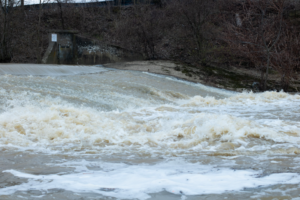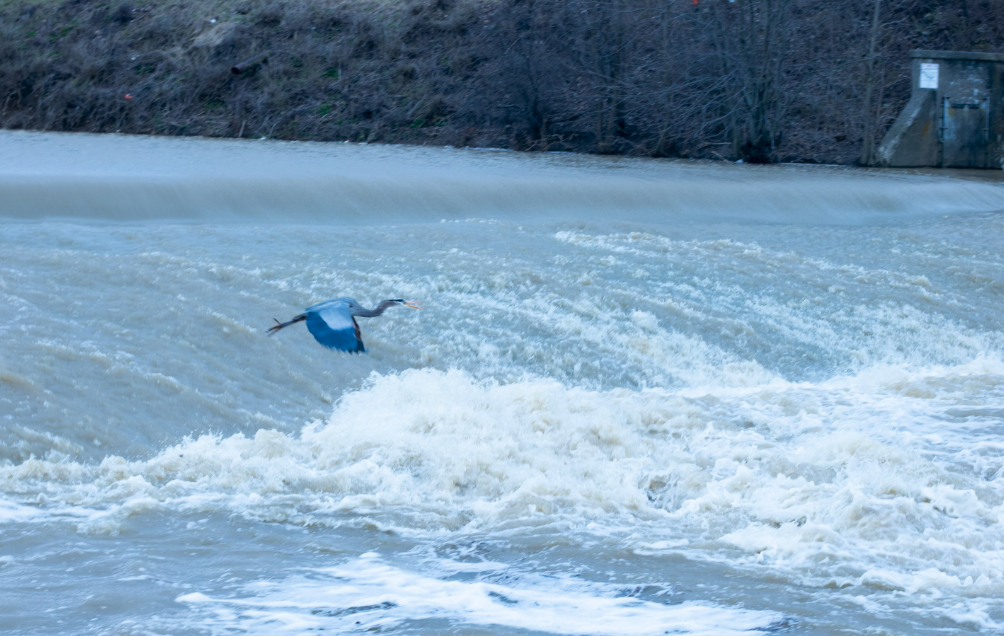Lessons Learned for Muncie
Writer / David Fennig
Photography Provided
In 1913, Indiana suffered a horrific flood that wreaked havoc on Muncie to a level that the city hopes to never see again. Record rainfall on March 23 through 26 led the White River to crest at over 22’, causing flooding to devastate the city. Four hundred homes and businesses were flooded in the city, railways were shut down, and public water service was completely shut off for days following the flood. As a mixed blessing, temperatures dropped below freezing and the rain turned to snow, which helped stall the inevitable growth of dangerous molds in the affected buildings, but it made cleanup and repair a miserable prospect.
The 1913 flood caused more than half a million dollars (approximately $15 million in today’s value) of damage to Muncie alone, and the damage done to the rest of the state is immeasurable. It is estimated that more than 400 people died across the state from the flooding and the resulting typhoid that swept through the affected areas.
 This was before the creation of the Federal Emergency Management Agency (FEMA), which is now responsible for responding to such crises across the country, and the American Red Cross was still a young organization without the resources to come to Indiana’s aid. Rescue work and crisis response was almost entirely the duty of the local community.
This was before the creation of the Federal Emergency Management Agency (FEMA), which is now responsible for responding to such crises across the country, and the American Red Cross was still a young organization without the resources to come to Indiana’s aid. Rescue work and crisis response was almost entirely the duty of the local community.
Currently, citizens can find information about their local floodplain through FEMA at msc.fema.gov. According to Adam Leach, city engineer for the City of Muncie, floodplain information can be readily found there to help keep residents informed about the flood risk in their area. There is terminology associated with these maps that can be misunderstood. A phrase like “100-year floodplain” is not a guarantee that a flood will happen every century, or that two floods won’t happen in the same time period. It should instead be understood that every year has a 1% chance of rainfall that would result in flooding.
In the 1930s and 1940s, the Army Corps of Engineers responded to the flood by building levees and widening the channel for the White River as it passes through Muncie. According to the Midwestern Regional Climate Center, the amount of rain that fell in spring of 1913 would result in the river cresting 5’ lower than the level that led to the disaster.
The City of Muncie took responsibility for maintaining the levees in the 1950s, and currently the Muncie Sanitary District holds that responsibility, though the Army Corps of Engineers still inspects them annually, as they do for all U.S. city levee systems. “The levees are in good shape,” says John Barlow, district administrator for the Muncie Sanitary District. “We are constantly working to meet the requirements of the corps.”
Currently, maintenance of the levees focuses on mowing, managing and maintaining flood gates, clearing pipes in the canal, and much more. “When Katrina occurred, everything changed from the Corps of Engineers perspective,” Barlow says. “We are working closely with them to keep the levees working properly.”
Localized flooding still occurs from heavy downpours that have nothing to do with the river cresting, and homeowners still struggle with flooded basements and other drainage-related issues. People with properties in these areas should be aware of the likelihood of these events and have plumbers and other contractors that they can call for assistance if need be. Recently, two incoming housing developments were proposed on or near flood plains, which could pose problems for incoming residents. The City of Muncie worked with the developers to ensure the foundation of the project was built up until it was out of flooding danger, and that experienced commercial rain gutter installation professionals were hired to install these countermeasures, saving the roof and walls from additional structural damage. If you experience flooding and need professionals, you can look for more information on DrierHomes website.
“The city recently ensured that these developments would take steps to raise the level of their projects to above the flood plain, to provide safety and security for residents,” says Michele Owen, communications director for the City of Muncie. “Even though we haven’t seen water levels like those of 1913, residents still need to deal with occasional flooding and the city takes that quite seriously.”
Heavy rainfall this spring has led the White River to start overflowing its banks, but it has still not come close to cresting the levees. Though natural disasters are impossible to predict and loom as a threat to even the most prepared cities, Muncie has learned from the disaster of 1913 and has taken serious steps to mitigate damage from flooding.







Comments 1
You’ve done a good job in the few words allowed in this short article to describe the past and potential flooding problems of Muncie. I commend your efforts to help get your readers’ heads around the concept of the “100-year flood, also known as the 1% flood.” Your explanation is fine until you get to this sentence: “It should be understood that every year has a 1% chance of rainfall that would result in flooding.” That’s not correct. Here’s a better explanation: “In any given year there is a 1% chance that a flood equaling or exceeding this large event, the 100-year flood, will occur.